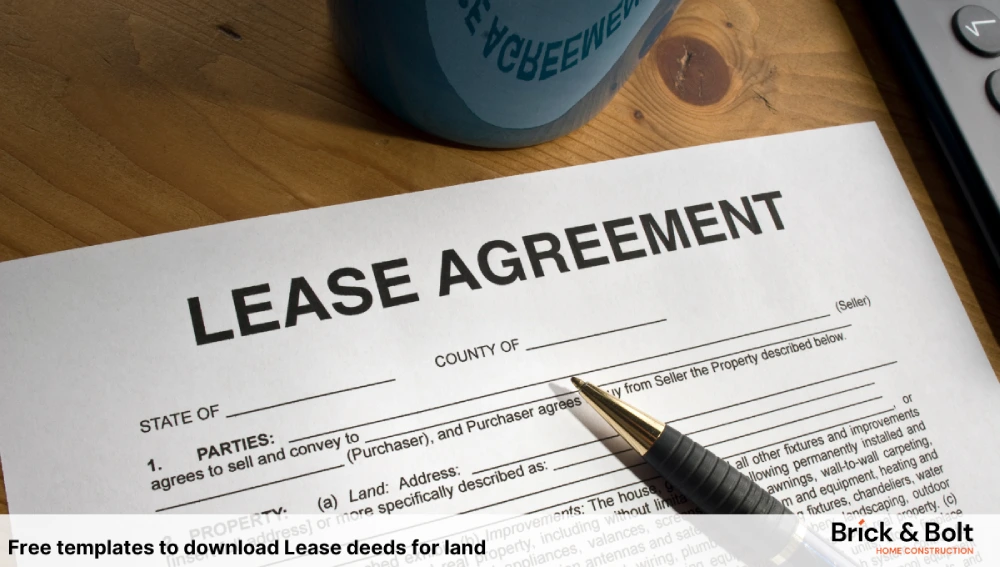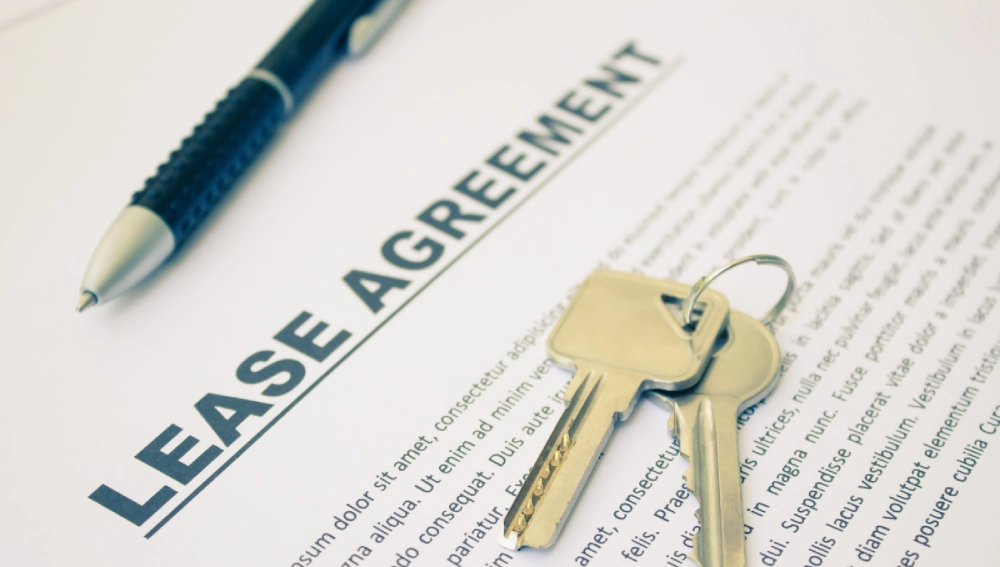The lease deed is an important document that has the terms and conditions in which the landowner gives the temporary possession of their land to another party, that is, the tenant. This agreement is basically a rental agreement made when the land is used by someone other than the landowner.
A lease deed is a legal document that provides all terms and conditions that both parties must follow during the period of the lease. Lease deeds must be registered if the period is more than 11 months.
This article will give you detailed information regarding the format of the lease deed for the land and also some free downloadable templates for your convenience.
Key Elements of a Lease Deed for Land
Leasing of land is a common practice for different purposes that include agriculture, commercial development, and residential use. A well-drafted lease deed can protect the interest of the landowner as well as tenants by clearly mentioning their rights and obligations.
A lease deed must consist of the following key elements:
1. Parties Involved
These sections must clearly identify the landowner and tenant. It must include their full names, addresses, and contact information.
2. Description of the Land
The description of the land that is being leased must be included here. The legal description consists of the official identification of the land, which is mainly based on government records. This may have a plot number, survey number, or any other specific identifier.
The physical address of the land. The size of the land, commonly expressed in acres or square feet, and the unique features of the buildings, water bodies, or others must be mentioned clearly.
3. Lease Term
The duration of the agreement is called the lease term. This must include the date on which the lease agreement starts and the date on which the lease agreement ends.
Early termination: there is a possibility for termination by either of the parties, and the terms associated with them must be addressed here.
Renewal options: The lease can also include renewal options, and terms and conditions must be stated.
A clear mention of the terms and conditions is needed to avoid any misunderstandings and help in a smooth experience for both parties.
4. Rent
The financial aspects of the lease agreement are mentioned here. The lease deed must cover the
- Rent amount: the specific cost that the tenant needs to pay the landowner for leasing the property.
- Frequency of the payment: how often does the rent need to be paid? That is the monthly or quarterly must be mentioned here.
- Due dates: the specific dates on which the rent must be paid must be mentioned.
- Late payment penalties: Any late fees that need to be paid if there is any delay in the rent payment must be defined clearly.
5. Security Deposit
A security deposit is like a financial safeguard for the landowner. It protects the landowner from any damage caused by the tenant in the land use or any non-compliance with the lease agreement.
The exact amount for a security deposit, payment terms, and conditions of return must be mentioned under this section in the lease agreement.
6. Use of Land
The use of land section provides information regarding the permissions in the use of land by tenants. This mainly states the restrictions on usage and protects the interests of both parties.
In this section, the permitted uses, restrictions on use, and environmental compliances will be mentioned. A proper and clear use of the land section can prevent misunderstandings and ensure the land use as per the landowner’s intention.
7. Maintenance
A lease deed must clearly mention the responsibilities of both parties regarding the maintenance of the land. This section mainly addresses the responsibilities of the tenant and the responsibilities of the landowner and helps in differentiating the normal damage expected from the use and the damage caused by the tenant.
The clear separation of the maintenance responsibilities helps reduce disputes and ensures the maintenance of the property throughout the term of the lease.
8. Taxes and Charges
Landowners come with related taxes and charges such as property taxes, utilities, and waste disposal fees. So, the lease deed must mention the responsibilities for taxes and charges and the payment method convenient for the tenant when paying the amount.
9. Indemnification
It’s a clause that protects both parties from legal repercussions arising from others’ actions. It states that the damage caused by the respective party will be responsible for their actions.
Free templates to download Lease deeds for land

The process of drafting the deed format has been made simpler with the availability of free templates for lease deeds. These free templates can be downloaded from online websites and used. Some of the sites that provide free templates for lease deed formats include legaltemplates.net, Easy Legal Docs, Smallpdf.com, and Template.net.
Conclusion
A well-drafted lease deed for land helps in clear communication and also protects the landowner and tenant throughout the term of the lease. By understanding key elements like Lease Deed Stamp Duty and utilizing available resources, you can create a solid foundation for your lease agreement.
It is advisable to contact a lawyer to ensure your lease deed is legally valuable and meets your specific requirements.
FAQS
The parties involved are the landowner(lessor) and the tenant (lessee).
Yes, both landowners and tenants can be companies or any other legal entities.
Both parties must sign the document in the presence of witnesses and have it notarized.

